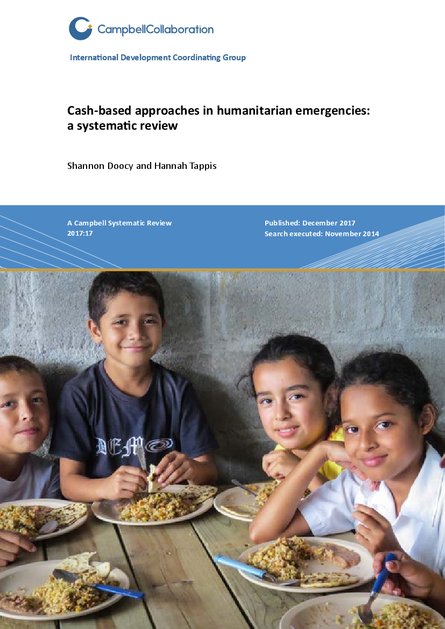
Cash-based approaches have become an increasingly common strategy for the provision of humanitarian assistance. Both cash-based approaches and in-kind food assistance can be effective means of increasing household food security among conflict-affected populations and maintaining household food security among food insecure and drought-affected populations. Cash transfers are more cost effective than vouchers which are more cost effective than in-kind food assistance.
This review assesses the effects of cash-based approaches on individual and household outcomes in humanitarian emergencies. It also assesses the efficiency of different cash-based approaches and identifies factors that hinder and facilitate programme implementation.